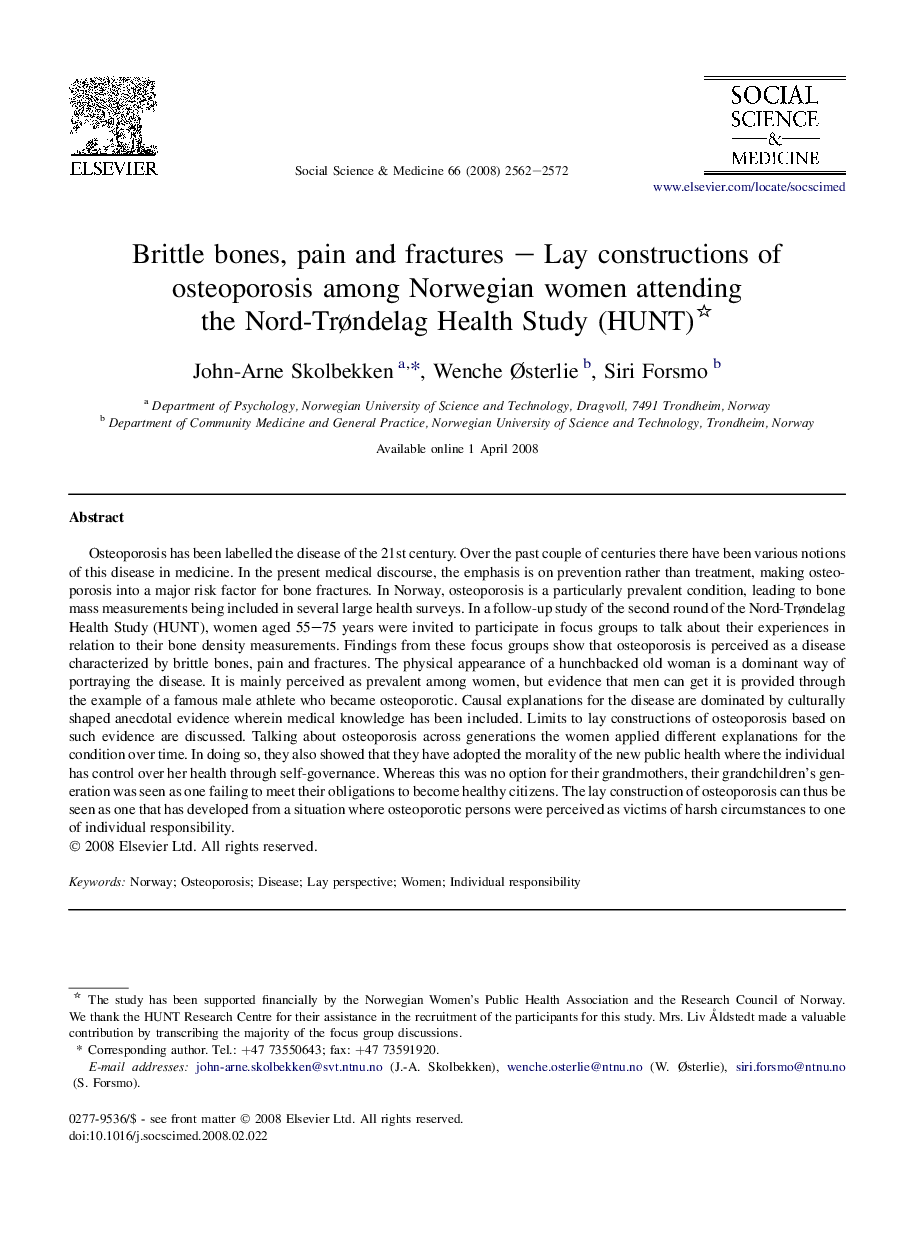| Article ID | Journal | Published Year | Pages | File Type |
|---|---|---|---|---|
| 953449 | Social Science & Medicine | 2008 | 11 Pages |
Osteoporosis has been labelled the disease of the 21st century. Over the past couple of centuries there have been various notions of this disease in medicine. In the present medical discourse, the emphasis is on prevention rather than treatment, making osteoporosis into a major risk factor for bone fractures. In Norway, osteoporosis is a particularly prevalent condition, leading to bone mass measurements being included in several large health surveys. In a follow-up study of the second round of the Nord-Trøndelag Health Study (HUNT), women aged 55–75 years were invited to participate in focus groups to talk about their experiences in relation to their bone density measurements. Findings from these focus groups show that osteoporosis is perceived as a disease characterized by brittle bones, pain and fractures. The physical appearance of a hunchbacked old woman is a dominant way of portraying the disease. It is mainly perceived as prevalent among women, but evidence that men can get it is provided through the example of a famous male athlete who became osteoporotic. Causal explanations for the disease are dominated by culturally shaped anecdotal evidence wherein medical knowledge has been included. Limits to lay constructions of osteoporosis based on such evidence are discussed. Talking about osteoporosis across generations the women applied different explanations for the condition over time. In doing so, they also showed that they have adopted the morality of the new public health where the individual has control over her health through self-governance. Whereas this was no option for their grandmothers, their grandchildren's generation was seen as one failing to meet their obligations to become healthy citizens. The lay construction of osteoporosis can thus be seen as one that has developed from a situation where osteoporotic persons were perceived as victims of harsh circumstances to one of individual responsibility.
